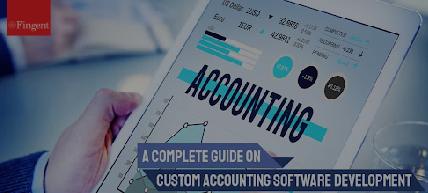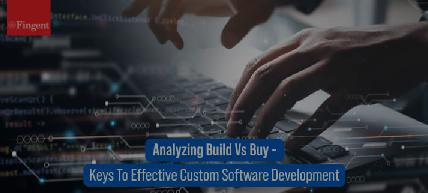Business scope
Unleash The Potential Of Software Development Services
Software development services are essential for businesses of all types and sizes in today’s digital world. As businesses continue to adopt digital technologies, businesses across all industries, from healthcare and finance to retail, manufacturing, and education, can leverage the power of software development services to streamline their operations, improve productivity, and uncover new opportunities for growth and innovation.
- 28% faster time-to-market
- 50% higher customer satisfaction rate
- 28% higher return on investment (ROI)
- 10-20% increase in productivity
- IP ownership and part of your organization’s asset
Engineering and Implementation
The Building Blocks of Software Development
When it comes to software development, several important aspects need to be considered to build a successful and efficient system. Two key components in this process are software engineering and software implementation.
Software Engineering
Software engineering is the systematic and disciplined approach in designing, developing, testing, and maintaining software to ensure that the final output meets the requirements and is of high quality, reliable, efficient, and scalable.
- Requirements gathering & analysis
- Design
- Implementation
- Testing
- Deployment
- Understanding the needs and expectations of the users and stakeholders, and defining the functional and non-functional requirements.
- Creating a design that satisfies the requirements, including the architecture, infrastructure, interface, data structures, algorithms, and modules.
- Writing the code based on the design, following coding standards and best practices.
- Evaluating the software to ensure that it meets the requirements, is free of defects, and ensures the highest security as intended.
- Releasing the software for production use, installing it on the target system, and providing user support.
Software Implementation
Software implementation is the process of building and putting the software into use. Implementation can be done in-house or outsourced, depending on the resources and expertise available.
- Installation
- Configuration
- Customization
- Integration
- Data migration
- User training
- Setting up the software on the target system and verifying that the installation is successful.
- Adjusting the settings and parameters of the software to align with the needs and preferences of the users and the environment.
- Modifying the software to meet specific requirements or to integrate with other systems, using extensions, plugins, or APIs.
- Combining the software with other applications, services, or hardware components, to achieve seamless data flow and functionality.
- Transferring the existing data from the old system to the new one, ensuring that the data is accurate, complete, and consistent.
- Educating the users on how to use the software, providing documentation, and offering ongoing support and assistance.
Have A Software Requirement To Discuss?
Navigating the Decision
Product Engineering or Business Application Development?
Businesses constantly seek new ways to stay ahead of the game in today’s digital era. One of the most crucial decisions they face is determining the best software development approach to adopt. Should they create a brand new solution or optimize an existing one? By making the right choice, businesses can unlock endless possibilities for growth and success.
Product Engineering
Product engineering involves developing a software solution from ideation to the final product. It allows businesses to create a solution that is perfectly aligned with their business needs.
Business application development involves improving an existing software solution by adding new features or capabilities. It is integrated or built over the existing solution rather than starting from scratch.
Types of software development
Which Software Development Fits Your Business?
| Custom Software Development | Web Application Development | Mobile Application Development | Enterprise Software Development |
| Cloud Application Development | Software Integration | Legacy System Migration | Software Support & Maintenance |
| Quality Assurance & Testing | Augmented Reality | Virtual Reality | Machine Learning |
| Custom Software Development | Web Application Development | Mobile Application Development |
| Cloud Application Development | Software Integration | Legacy System Migration |
| Enterprise Software Development | Software Support & Maintenance | Quality Assurance & Testing |
| Augmented Reality | Virtual Reality | Machine Learning |
Latest Trends
The Future of Software Development
- Artificial Intelligence (AI) : Creating intelligent machines that can perform tasks requiring human intelligence, such as understanding natural language or recognizing images.
- Machine Learning : Training software to recognize patterns in data and make informed predictions based on that data.
- Intelligent Automation (iRPA) : Using software robots or bots to automate mundane and time-consuming tasks, freeing employees to focus on higher-value work.
- Internet of Things (IoT) : Connecting devices to the internet and enabling them to communicate with each other, creating a network of devices that can work together.
- Blockchain : Enabling secure and transparent transactions, commonly used in cryptocurrency and financial industries.
- Virtual and Augmented Reality (VR/AR) : Transporting users to immersive virtual worlds or overlaying digital information onto the real world, making for some seriously mind-bending experiences.
- Cloud Computing : Enabling businesses to access computing resources and storage via the internet, reducing the need for on-premise hardware and software.
Building Your Software
Outsource or In-house software development?
When it comes to building software, businesses face a critical decision: whether to outsource the development process or keep it in-house. Both options have pros and cons, and the decision ultimately depends on various factors such as budget, expertise, and timeline.
| Global talent pool | Cost saving | Better control | Security | Faster time-to-market | Scalability | |
| Outsourcing |  |
 |
 |
 |
 |
 |
| In-house |  |
 |
 |
 |
 |
 |
| Outsourcing | In-house | |
|---|---|---|
| Global talent pool |  |
 |
| Cost saving |  |
 |
| Better control |  |
 |
| Security |  |
 |
| Faster time-to-market |  |
 |
| Scalability |  |
 |
Software Outsourcing
Pros
- Outsourcing is cost-effective as it saves expenses like office rent, salaries, and benefits.
- Tap into a diverse talent pool from around the world.
- Can be completed faster, allowing for quicker time-to-market.
- Flexibility to scale up or down resources as per their requirement
Cons
- May result in communication barriers, such as language differences or time zone differences.
- May pose security risks, as sensitive company data may be exposed to third-party vendors.
- May result in lack of control in the development process.
In-house Development
Pros
- Complete control over the development process.
- Easier collaboration and communication within the team
- Greater control over data security, as all sensitive information stays within the company.
Cons
- Significant investment in time, money, resources, and infrastructure.
- May lack access to specialized expertise.
- Difficult to quickly scale up or down resources as per the company's changing needs.
- With limited resources, in-house development may result in longer time-to-market
Are You Looking To Outsource Your Software Needs?
Support & Maintenance Services
Ensuring Your Software's Longevity
The two essential aspects of software development that ensure a software product’s continued functioning and usability- support and maintenance. After a software product has been developed and deployed, it requires ongoing support and maintenance to ensure it remains operational, secure, and up-to-date. By investing in these activities, businesses can help ensure that their software products continue to meet the evolving needs of their users and deliver value over the long term.

Bug fixing and issue resolution

Security updates

Performance optimization

User training and support
Investing Wisely
Understanding the costs of software development
Software development costs can vary greatly depending on a variety of factors, including the size and complexity of the project, the technology stack being used, the expertise of the development team, and the duration of the project. However, it’s important to note that software development cost isn’t just limited to the initial development phase but also includes ongoing support and maintenance expenses that are inevitable.
There are several cost models for software development –
Fixed price
This model involves agreeing on a fixed price for the entire project upfront. This can be suitable for projects with well-defined scope and requirements.
Time and Materials (T&M)
This model involves billing based on the number of hours worked and the materials used. This is a flexible model and is suitable for projects with evolving requirements.
Staff Augmentation
This model involves hiring additional team members on a temporary basis to augment the existing team. This can be useful for managing short-term spikes in workload.
Still Unsure About How To Get Started With Your Software Development?
The Competitive Edge
How businesses use software development to stay ahead
Impact XM, a renowned experiential marketing agency in the US, leveraged customized software to reshape its marketing strategy. The software solution empowered them to enhance their brand’s presence at events and trade shows while providing valuable insights into their target audience.
Outcomes:
- Streamlined the data collection process, saving time and effort
- Eliminated the manual data entry, minimizing errors and improving accuracy
- Boosted efficiency and productivity, leading to increased output and revenue
- Facilitated cross-functional interdepartmental collaboration and improved communication
Fingent’s approach
Best Practices for Software Development
A well-defined software development process involves several stages, each with its own set of tasks and objectives. This process ensures that the software is developed efficiently, on time, and within budget while meeting the desired quality standards.
- Planning & Analysis : Defining the project requirements, scope, and objectives, followed by gathering and analyzing information about the project, identifying the resources needed, and estimating the project timeline and budget.
- Design : Designing the software architecture and creating a detailed design specification, including user interface design, database design, and software component design.
- Development : Actual coding and programming of the software according to the underlying design specification.
- Testing : Testing the software to ensure that it meets the project requirements and functions as intended. This includes both unit and integration testing.
- Deployment & Maintenance : Once the software has been tested and approved, it is deployed to the production environment. Followed by ongoing maintenance and support of the software, including bug fixes, updates, and enhancements.

Free consultations

Ideation

Strategy

Design

Development

Testing

Maintenance
Quality assurance is critical to software development to ensure that the final product meets the desired standards and requirements. At Fingent, we take the extra step to ensure the quality of the software developed with structured QA processes and sophisticated performance tracking tools.
Quality Control
A defined set of processes is employed at every stage of software development to check the quality of software products or services.
Code Quality
Use of code quality standards to evaluate the quality of the code ahead of every release to ensure the maintainability of the code in the long term.
Software Testing
Includes functional, performance, unit, integration, security, and usability testing to ensure the seamless performance of the software.
Insights
More Insights on Software Development Service
Build Or Buy: Analyzing The Most Crucial Step In Software Development!
To build or to buy has been a million-dollar question most businesses seek an answer for. This can become more daunting when you consider the numerous factors influencing the decision.
Custom Accounting Software Development: Understand The Steps, Costs, and Benefits
Custom accounting software is a tailor-made software program designed to address your business-specific accounting needs, such as cash flow tracking, tax calculation, internal auditing, financial transactions, invoicing, reconciliation, business analysis, reporting, and more.FAQ
Frequently Asked Questions
Choosing the right software development company is vital for business growth. There are many aspects to consider while choosing a software development partner. Evaluate the company’s expertise, experience, structure, work methodology and technologies used, market reputation, pricing models, and communication. The success and quality of your future software depend on partnering with companies having great expertise. For more detailed information, click here.
Yes. We are more than happy to enhance, upgrade and further develop software to comply with future technologies. At Fingent, we have skilled and certified talents well versed in the latest trends and tech platforms that can bring out competitive products.
When it comes to preparing a software project, there is no place for half measures. We begin the project by designing a prototype that helps you examine if the concept is feasible from your tech and business perspective. Further to that, it gives us a bigger picture of how software development should proceed.





 US
US Insurance
Insurance









































